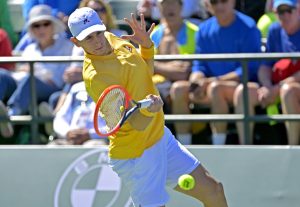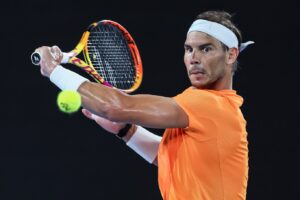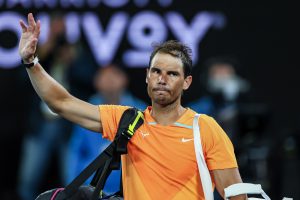World No. 26 Alex de Minaur dominated a round robin competition on clay featuring three fellow Top 55 players. All Spaniards. I don’t think I ever envisaged leading an article with these words, but it’s 2020 after all. Expect the unexpected.
Three-day tournament by the Mediterranean
The Region of Valencia Tennis Challenge usurped the final weekend of Roland Garros. Even though the event naturally lacked the pedigree and official status of the postponed major, it was nice to see Roberto Bautista, Pablo Carreno, Pablo Andujar and the aforementioned de Minaur in action.
A luxurious beachfront resort called Cumbre del Sol, located one hour north of Alicante, hosted the tournament. Aside from the obvious rustiness, all four competitors had to deal with consistent wind and even a hail outburst, which ruined the court and forced the suspension of the de facto final between Bautista and de Minaur when the latter led 1-0 and 40-30.
Tumultuous player-surface relationship
The 21-year-old Australian, who officially resides in the Bahamas for tax purposes but spends the majority of time in Spain, displayed a much-improved game on clay, his weakest surface by far. Considering he is lightning-quick on the court, one would expect de Minaur to thrive on dirt. However, both the numbers and the eye test dissent.
Let’s start with one of the most shocking contrasts in tennis: de Minaur is currently No. 10 on Tennis Abstract’s overall ELO Ratings, yet he clocks in at No. 240 on the clay-specific version. Yes. Not a typo. The Aussie is rated lower than the likes of Manuel Guinard, Tung Lin Wu or Johannes Haerteis here.
A career 2-9 record on tour-level main draws is nothing to brag about, especially when his only victims were a slumping Gastao Elias and clay-allergic Bradley Klahn.
Strengths on hard, flaws on clay
De Minaur is a pest to play against on hard because of his versatility. He’s comfortable stepping inside the baseline and taking balls on the rise, and also playing the retrieving game from deep positions.
Nevertheless, the effectiveness of those strategies collapses on clay. Playing on top of the baseline is suicidal, because it leaves him exposed versus witty opponents who hit precise angles or high-bouncing groundstrokes. Linkewise, if he steps way back toward the fence, his flat shots aren’t powerful enough to do damage (hey Robin Soderling!) or loopy enough to neutralize a point.
Nowadays, using a full eastern grip on the forehand isn’t very common at the top of the men’s game. Still, Roger Federer or Stefanos Tsitsipas manage to create a low-to-high trajectory and apply considerable topspin to their respective shots. Contrarily, de Minaur doesn’t drop his wrist as much, instead sticking with a back-to-front path on the way to contact.
Best (unofficial) career wins on clay
We’ll never know if de Minaur would have beaten Bautista on Sunday, but we shouldn’t diminish the pair of straight set wins he scored over Andujar (6-2 6-3) and Carreno (7-5 6-4), who are no slouches on clay. In fact, their raw clay ELO is higher than Federer’s. Andujar has won four ATP titles on the surface and is a former Madrid semifinalist, while Carreno lifted the 2017 Estoril trophy and reached the French Open quarterfinals.
Speaking of Roland Garros, Carreno totally subdued de Minaur in Paris last year (6-3 6-1 6-1). The Aussie, younger and slimmer, had definitely an edge in conditioning this weekend, which is a decisive factor given the current circumstances. Notwithstanding, some improvement was evident. Not only did he vaporize short, dead balls with his forehand, but de Minaur also held his own during rallies. His average forehand looked more curvy and bouncy.
Anyway, it was nice to see Alex de Minaur worked a little bit on his clay game during confinement. At one point, it appeared his quarantine consisted exclusively of golf trick-shots, heroics and club tosses.






